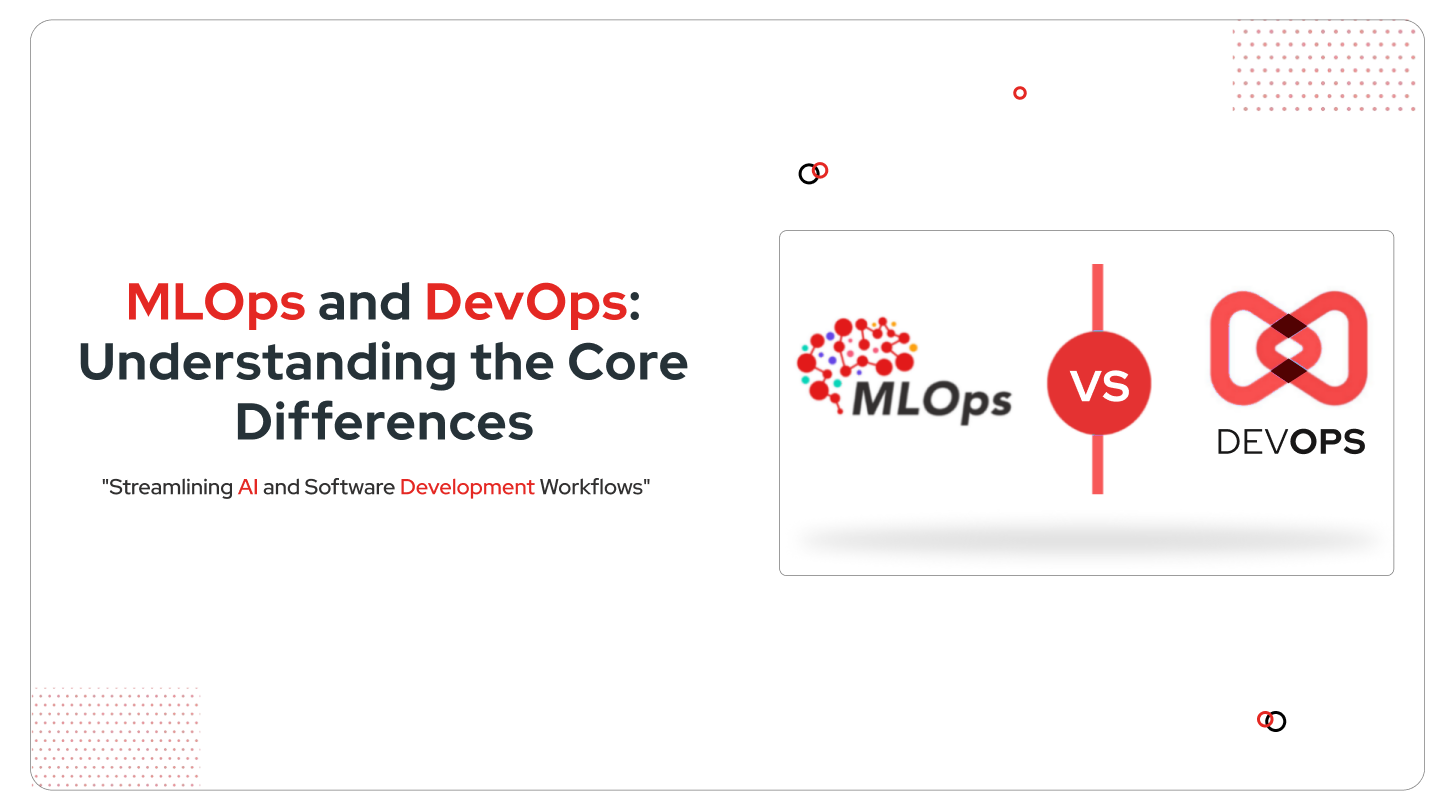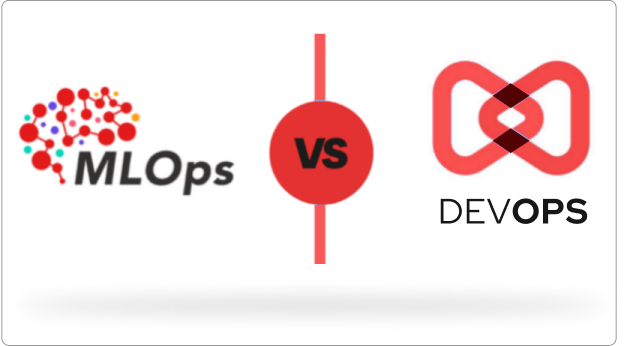
In the ever-evolving world of technology, DevOps and MLOps have become critical frameworks for organizations looking to streamline their development processes and deploy robust applications. As artificial intelligence (AI) and machine learning (ML) continue to grow in importance, understanding the differences between MLOps and DevOps is essential for businesses aiming to succeed in these domains.
What are MLOps?
MLOps, or Machine Learning Operations, is a set of practices that combine DevOps and machine learning to streamline the entire lifecycle of ML models, from development to deployment and maintenance. It involves automating various tasks like data preparation, model training, evaluation, and deployment, ensuring efficient and reliable model updates. MLOps helps organizations achieve faster time-to-market, improved model performance, and better collaboration between data scientists and IT teams.
Understanding DevOps
DevOps is a collaborative approach that bridges the gap between software development and IT operations teams. It emphasizes automation, communication, and continuous delivery to streamline the software development lifecycle. By automating tasks and fostering collaboration, DevOps teams can rapidly deploy high-quality software while ensuring reliability and efficiency. This approach has become increasingly popular as organizations seek to adapt to the demands of modern software development.
MLOps vs DevOps: Key Differences You Need to Know in 2024
In 2024, businesses are expected to spend over $30 billion on AI and ML initiatives. Yet, a staggering 87% of ML projects fail to make it into production.
But why should you care about MLOps vs DevOps in the first place?
As someone who has worked on multiple ML projects, I’ve seen firsthand how the lack of proper MLOps practices can derail even the most promising initiatives. From data drift to model reproducibility issues, the challenges are numerous and often overlooked.
By understanding the differences between MLOps and DevOps, you’ll be better equipped to build scalable and reliable ML systems that deliver real business value. So, let’s get started on this journey to demystify MLOps and unlock the full potential of your AI projects in 2024 and beyond.

MLOps: A New Frontier in Operations
MLOps is a set of practices designed to streamline the development, deployment, and maintenance of machine learning models. It focuses on three key areas:
- Data Management and Versioning
In MLOps, data is treated as a first-class citizen. Managing and versioning datasets used for training and validation are critical components. Tools like DVC (Data Version Control), Pachyderm, and lakeFS help track changes to datasets, enabling reproducibility and collaboration among team members.
| Tool | Description | Source |
|---|---|---|
| DVC | Data Version Control for managing datasets | dvc.org |
| Pachyderm | Version control for data and collaboration | pachyderm.io |
| lakeFS | Data versioning and collaboration platform | lakefs.io |
Model Training and Validation
MLOps emphasizes automating the model training and validation process. Pipelines that automatically retrain models when new data arrives or when code changes occur are crucial. Tools like MLflow and Kubeflow are instrumental in building these pipelines and managing the model lifecycle.
Model validation ensures that models perform as expected in production. Techniques like cross-validation, holdout validation, and A/B testing are used to assess model performance and detect issues like overfitting or concept drift.
- Experiment Tracking and Reproducibility
MLOps also stresses the importance of tracking experiments and ensuring reproducibility. Data scientists often run multiple experiments with different hyperparameters, architectures, and datasets. Tools like Weights and Biases (wandb) and TensorBoard assist in tracking these experiments, comparing results, and collaborating with team members.
Reproducibility is crucial to ensure models can be reliably retrained and deployed. This involves versioning code, data, and models, documenting experiments, and using containerization technologies like Docker to ensure a consistent environment.
Key Focus Areas of DevOps
DevOps is a set of practices that aims to bridge the gap between development and operations teams. It focuses on three key areas:
- Code Versioning and Collaboration
DevOps emphasizes code versioning and collaboration among team members. Tools like Git and GitHub are widely used to manage code changes, enable code reviews, and facilitate collaboration.

- Continuous Integration and Delivery
Continuous Integration (CI) and Continuous Delivery (CD) are core practices in DevOps. CI involves automatically building and testing code changes whenever they are pushed to a version control system. CD extends this by automatically deploying code changes to production if they pass all tests. Tools like Jenkins, CircleCI, and GitLab CI/CD are essential for setting up CI/CD pipelines, enabling faster and more reliable deployments.
- Infrastructure as Code
DevOps promotes treating infrastructure as code (IaC). This involves defining and managing infrastructure using version-controlled configuration files. Tools like Terraform, AWS CloudFormation, and Ansible help in provisioning and managing infrastructure using code. IaC enables teams to version control their infrastructure, automate deployments, and ensure consistency across different environments (dev, staging, prod).
Is DevOps better than MLOps?
It’s not a matter of one being better than the other. MLOps and DevOps serve different purposes and are both important in their respective domains.
DevOps is a well-established practice that has been widely adopted across the software industry. It has proven to be effective in streamlining the software development lifecycle, reducing time-to-market, and improving the reliability and stability of software systems.
MLOps, on the other hand, is a relatively new practice that is still evolving. It applies DevOps principles to the machine learning lifecycle, considering the unique challenges posed by ML, such as data management, model training, and experiment tracking.
While MLOps builds on top of DevOps practices, it requires additional skills and tooling specific to machine learning. It also requires close collaboration between data scientists, ML engineers, and DevOps teams.
Conclusion
In summary, MLOps and DevOps are complementary practices that serve different purposes. DevOps is essential for streamlining the software development lifecycle, while MLOps is crucial for managing the complexities of the machine learning lifecycle. Both practices are important for organizations that aim to build and deploy ML-powered applications efficiently and reliably. As AI and ML continue to shape the future of technology, mastering both MLOps and DevOps will be key to unlocking the full potential of these powerful tools.